Resident Crews of the International Space Station (ISS)
![]()
ISS: Expedition 33 |
 |
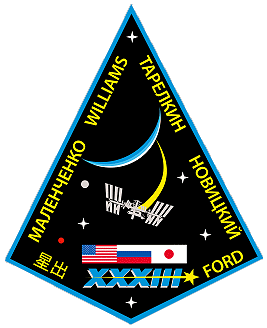 |
 |
alternative crew photo |
|
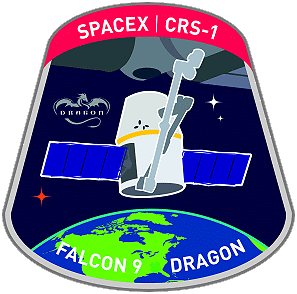 |
|
![]()
Crew, launch- and landing data
| No. | Nation | Surname | Given names | Position | Spacecraft (launch) |
Launch date |
Launch time |
Spacecraft (landing) |
Landing date |
Landing time |
Mission duration |
Orbits |
| 1 | Williams | Sunita Lyn "Suni" | ISS-CDR | Soyuz TMA-05M | 15.07.2012 | 02:40:03.091 UTC | Soyuz TMA-05M | 19.11.2012 | 01:53:20.1 UTC | 126d 23h 13m 17s | 1973 | |
| 2 | Novitsky | Oleg Viktorovich | Flight Engineer-1 | Soyuz TMA-06M | 23.10.2012 | 10:51:10.934 UTC | Soyuz TMA-06M | 16.03.2013 | 03:06:13.2 UTC | 143d 16h 15m 02s | 2233 | |
| 3 | Tarelkin | Yevgeni Igorevich | Flight Engineer-2 | Soyuz TMA-06M | 23.10.2012 | 10:51:10.934 UTC | Soyuz TMA-06M | 16.03.2013 | 03:06:13.2 UTC | 143d 16h 15m 02s | 2233 | |
| 4 | Ford | Kevin Anthony | Flight Engineer-3 | Soyuz TMA-06M | 23.10.2012 | 10:51:10.934 UTC | Soyuz TMA-06M | 16.03.2013 | 03:06:13.2 UTC | 143d 16h 15m 02s | 2233 | |
| 5 | Malenchenko | Yuri Ivanovich | Flight Engineer-4 | Soyuz TMA-05M | 15.07.2012 | 02:40:03.091 UTC | Soyuz TMA-05M | 19.11.2012 | 01:53:20.1 UTC | 126d 23h 13m 17s | 1973 | |
| 5 | Hoshide | Akihiko | Flight Engineer-6 | Soyuz TMA-05M | 15.07.2012 | 02:40:03.091 UTC | Soyuz TMA-05M | 19.11.2012 | 01:53:20.1 UTC | 126d 23h 13m 17s | 1973 |
unofficial Backup Crew
| No. | Nation | Surname | Given names | Position |
| 1 | Hadfield | Chris Austin | ISS-CDR | |
| 2 | Vinogradov | Pavel Vladimirovich | Flight Engineer | |
| 3 | Misurkin | Aleksandr Aleksandrovich | Flight Engineer | |
| 4 | Cassidy | Christopher John "Chris" | Flight Engineer | |
| 5 | Romanenko | Roman Yuriyevich | Flight Engineer | |
| 6 | Marshburn | Thomas Henry "Tom" | Flight Engineer |
 |
 |
 |
Expedition Report
|
Launch from the Baikonur Cosmodrome (Oleg
Novitsky, Yevgeni
Tarelkin and Kevin
Ford
with Soyuz
TMA-06M). Yuri
Malenchenko, Sunita
Williams and Akihiko
Hoshide were onboard since July 17, 2012 (arrival with
Soyuz
TMA-05M). ISS Expedition 33 began with the undocking of spacecraft Soyuz TMA-04M on September 16, 2012 at 23:08:53 UTC. The former Expedition 32 (Gennadi Padalka, Sergei Revin and Joseph Acaba) returned safely to Earth. With the arrival of Soyuz TMA-06M on October 25, 2012 the Expedition 33 became a six-person-crew. Soyuz TMA-06M carried Oleg Novitsky, Yevgeni Tarelkin and Kevin Ford to the space station. On October 08, 2012 occurred the launch of the SpaceX Dragon cargo craft. Two days later, on October 10, 2012, using the International Space Station’s Canadian-built robotic arm, Expedition 33 Flight Engineer Akihiko Hoshide captured the unmanned craft. He was assisted by Sunita Williams. Later, the astronauts berthed Dragon to the NASA module. The mission plan, as published by NASA before the mission, called for the Falcon 9 to reach supersonic speed at one minute, 10 seconds after liftoff, and pass through the area of maximum aerodynamic pressure, "max Q" - the point when mechanical stress on the rocket peaks due to a combination of the rocket's velocity and resistance created by the Earth's atmosphere - 10 seconds later. The plan called for two of the first-stage engines to shut down to reduce the rocket's acceleration at approximately 2 minutes 30 seconds into the flight, when the Falcon 9 would nominally be 90 kilometers (56 miles) high and traveling at 10 times the speed of sound. The remaining engines were planned to cut off shortly after - an event known as main-engine cutoff (MECO). Five seconds after MECO, the first and second stages separate. Seven seconds later, the second stage's single Merlin vacuum engine was projected to ignite to begin a 6-minute, 14-second burn to put Dragon into low-Earth orbit. Forty seconds after second-stage ignition, Dragon's protective nose cone, which covers Dragon's berthing mechanism, was planned to be jettisoned. At the 9-minute, 14-second mark after launch, the second-stage engine was scheduled to cut off (SECO). Thirty-five seconds later, Dragon was planned to separate from Falcon 9's second stage and reach its preliminary orbit. Dragon would, per plan, then deploy its solar arrays and open its guidance and navigation control (GNC) bay door which holds the sensors necessary for rendezvous and Dragon's grapple fixture. At one minute, 19 seconds into the launch, Engine 1 lost pressure and was commanded by the rocket to shut down. Due to the engine failure on the first stage, safety protocols for rendezvous with the ISS prevented the secondary-payload Orbcomm Satellite from being placed in the correct orbit. When launched the CRS-1 Dragon was filled with about 1,995 lb (905 kg) of cargo, 882 lb (400 kg) without packaging. Included is 260 lb (120 kg) of crew supplies, 390 lb (180 kg) of critical materials to support the 166 experiments on board the station and 66 new experiments, as well as 232 lb (105 kg) of hardware for the station as well as other miscellaneous items. The Dragon returned 1,995 lb (905 kg) of cargo, 1,673 lb (759 kg) without packaging. Included is 163 lb (74 kg) of crew supplies, 866 lb (393 kg) of scientific experiments and experiment hardware, 518 lb (235 kg) of space station hardware, 68 lb (31 kg) of spacesuit equipment and 55 lb (25 kg) of miscellaneous items. On October 28, 2012 at 13:30 UTC the SpaceX Dragon cargo craft undocked from the International Space Station. The Dragon capsule landed in the Pacific Ocean, about 450 km (280 mi) off the coast of southern California. Progress M-17M was launched on time at 07:41:19 UTC on October 31, 2012 from the Baikonur Cosmodrome in Kazakhstan, atop a Soyuz-U carrier rocket. It was successfully deployed into low Earth orbit ten minutes later. At the time of launch, the ISS was about 1,550 kilometers (963 mi) ahead of the launch site. At the time of orbital insertion Progress was 3,610 kilometers (2,243 mi) behind the ISS. Like the previous mission, Progress M-16M, Progress M-17M used a fast approach profile to the ISS, rendezvousing and docking on its fourth orbit, as opposed to docking about 50 hours after launch on most previous Progress flights. This profile allowed the transportation of critical biological payloads to the ISS. Following testing on Progress flights, the same rendezvous profile was introduced for manned Soyuz flights in 2013 to reduce crew fatigue. During the rendezvous sequence, the spacecraft performed several burns and rendezvous impulses to enter the proximity of the International Space Station. The KURS system on board the ISS as well as the Progress was activated for navigational purposes. The TV System was activated at a range of 8 kilometers (5.0 mi) as Progress M-17M continued its approach. Aboard the International Space Station, cosmonaut Yuri Malenchenko was standing by at the TORU system as Progress further came close to Space Station to assume manual control over the spacecraft if an issue with the automated docking was to be spotted. The other two cosmonauts Oleg Novitsky and Yevgeni Tarelkin of Expedition 33 members were assisting Yuri Malenchenko and acquired engineering footage of the Progress spacecraft. Progress M-17M initiated its flyaround, upon reaching a distance of 300 meters (980 ft) to Space Station. Once the flyaround was complete, Progress M-17M entered stationkeeping at a range of 180 meters (590 ft). Russian Mission Controllers in Korolev, just outside of Moscow verified that all systems on the spacecraft were performing nominally as well as the alignment with the docking port in the Zvezda Module. With the final command approach issued, Progress fired its thrusters and followed a nominal approach profile. The docking to the Zvezda Module occurred at 13:33 UTC on October 31, 2012, five hours fifty-two minutes after launch. At the time of docking, the space station and the Progress were flying above Bogota, Colombia. Progress M-17M was packed with 1,247 kilograms (2,749 lb) of equipment, food, clothing, life support system gear ("dry" cargo), 683 kilograms (1,506 lb) of propellant to replenish reservoirs that feed the Russian maneuvering thrusters, 420 kilograms (930 lb) of water and 47 kilograms (104 lb) of oxygen and air. Progress M-17M undocked from the Space Station at 12:02 UTC on April 15, 2013. The departure of the spacecraft cleared a docking port on the Zvezda module for the Progress M-19M resupply vehicle which was subsequently launched on April 24, 2013. In the following six days, the Progress M-17M spacecraft operated in an autonomous mode conducting a series of scientific experiments under the Radar-Progress project. At the end of the mission, Progress M-17M re-entered the Earth's atmosphere and fragments fell into the Pacific Ocean at 15.02 UTC on April 21, 2013. Sunita Williams and Akihiko Hoshide performed a spacewalk on November 01, 2012 (6h 38m). The astronauts repaired an ammonia leak on one of the station's port-side radiators. Expedition 32 and Expedition 33 / 34 continue to expand the scope of research aboard the International Space Station, with new research facilities being delivered and a new micro-satellite deployment system being tested. The station has returned to a predominantly six-person crew, allowing more crew time available for science activities. During this timeframe, more than 240 experiments will be performed on the station, involving more than 80 new experiments, technology demonstrations and facilities. More than 400 investigators from around the world are involved in the various types of research. The investigations cover human research, biological and physical sciences, technology development, Earth observation, and education. Several new Japan Aerospace Exploration Agency (JAXA) investigations are joining the suite of research. JAXA's Japanese Experiment Module (JEM) Small Satellite Orbital Deployer (J-SSOD) will demonstrate a new capability to launch small satellites from the JEM Remote Manipulator System - also known as the Kibo Laboratory robotic arm. This technology development demonstration is intended to prove air, water, and surface monitoring capabilities. The Aquatic Habitat (AQH) is planned for delivery on JAXA's H-II Transfer Vehicle-3 (HTV-3) also known as Konotouri 3, scheduled to launch July 21 and the third HTV to visit the station. This freshwater habitat is a new facility for the space station, which will enable investigations using fish, to learn more about bone and muscle atrophy (medical issues for the aging population) and radiation effects. The first planned residents of the habitat are Medaka fish, which are transparent - allowing for easy observation of their skeletal systems. The fish will be delivered to the station on a later flight. This facility will be housed in the Kibo laboratory. Testing the performance of a miniaturized flow cytometer, Microflow1, is a new investigation provided by the Canadian Space Agency (CSA). Flow cytometers use a laser to analyze individual cells for cell counting and sorting, biomarker (disease signatures) detecting, and protein engineering. This technique is used routinely in diagnosing health issues, and is useful in basic research and many clinical applications. An operational medical tool of this kind on the station would allow for many types of testing and analysis, including blood cell counts (complete blood count or CBCs) to be done in orbit. This type of blood testing is quite common on Earth and is often one of the first activities performed by physicians to determine illness specifics. A flow cytometer would make this standard test available aboard the station. Another first-time investigation is NASA's Advanced Colloids Experiment-1 (ACE-1), using a light microscope to help provide a better understanding of crystallization and phase separation of small colloidal particles, and production quality control. Results from this research could considerably impact the shelf-life of many products used on Earth and for long-duration spaceflight missions. As with prior expeditions, many investigations are designed to gather information about the effects of long-duration spaceflight on the human body, which will help us understand complicated processes such as immune systems with plans for future exploration missions. The European Space Agency's human research involving Circadian Rhythms examines the role of synchronized circadian rhythms (the human body's 24-hour light-dark cycle) and possible maintenance during long-duration spaceflight and addresses the impacts to crew members' health and wellbeing. Understanding how light/dark cycles and sleep pattern changes affect circadian rhythms enhances adaptation, performance and healthcare of future crew members. Results from this research could also be a benefit for shift workers on Earth. The International Space Station Test Bed for Analog Research I-STAR Earth Departure Communications Delay Study (COMM Delay) will assist engineers and scientists in human research regarding communication delays likely to be experienced during a mission to Mars, an asteroid, or other possible destinations. Researchers want to understand any significant impacts in crew behavior and performance, including where in the communications delay is the critical point possibly affecting behavioral and task performance. The first full voice communications delay test is planned during Expedition 36, which starts in summer 2013. As part of U.S. National Laboratory activities on the station, NanoRacks modules provide autonomous, self-contained experiments that can be flown quickly and inexpensively by students, companies and other U.S. government agencies. NanoRacks facilities are being expanded, with the addition of a small centrifuge and a plate reader to be used for plant and animal tissue investigations, and allowing for onsite microbiological analysis, expanding life science and biological research on the station. The NanoRacks plate reader is a laboratory instrument designed to detect biological, chemical or physical events of samples in microtiter plates (a flat plate with lots of "wells" used as small test tubes). Microplate readers are widely used in research, drug discovery, bioassay validation (determination of purity concentration or biological activity), quality control and manufacturing processes in the pharmaceutical and biotechnological industry and academic organizations. Another U.S. Laboratory offering, the National Laboratory Pathfinder - Vaccine - Salmonella (NLPVaccine-Salmonella) investigation continues. Investigators are researching a vaccination for salmonella for the prevention of infection on Earth and in microgravity. Worldwide, salmonella is the most common cause of food poisoning and a major cause of death in children. Earth science also is on the list of topics that generates much interest, and there are many investigations involving this aspect. ISS SERVIR Environmental Research and Visualization System (ISERV) is an investigation designed to gain experience and expertise in automated data acquisition. ISERV will serve as a pathfinder investigation that will lead to the development of enhanced capabilities that will provide useful images to support disaster (or other significant event) monitoring and assessment, and environmental decision making when needed. ISERV is a joint venture between NASA and the U.S. Agency for International Development (USAID) and will be installed in the Window Observational Research Facility (WORF). The European Space Agency's Facility for Absorption and Surface Tension (FASTER) will be flown for the first time on the space station. This investigation will research how surfactants will affect the physical chemistry properties and emulsion stability of droplet interfaces. The goal is to generate a model of emulsion dynamics that can then be used in industrial applications where mixtures of two or more liquids that are typically unable to be blended (for instance oil and water) are desired. In typical NASA and international partner fashion, there are many educational activities and investigations planned to teach and inspire students of all ages. The YouTube Space Lab Global Science contest winners were chosen and announced, with the two winning experiments being flown and performed on the space station before the end of the year. Earth Knowledge Acquired by Middle School Students (EarthKAM) continues to excite and engage middle-school students. Alpha Magnetic Spectrometer-02 (AMS) and Robonaut-2 investigations are ongoing. The AMS continues to collect a vast amount of data - measuring almost double the amount researchers expected, at a rate of about 1.2 billion particles per month. The testing of Robonaut's capabilities and movement continues as planned. The short-duration SpaceX demonstration mission returned several Material Science Research Rack (MSRR) sample cartridge assemblies used in metal alloy materials processing. The cartridge assemblies will be analyzed to understand the alloy solidification that occurred in microgravity during the Solidification along a Eutectic path in Ternary Alloys-2 (SETA) and Microstructure Formation in Casting of Technical Alloys under Diffusive and Magnetically Controlled Convective Conditions/ Columnar-to-Equiaxed Transition in Solidification Processing (MICAST/CETSOL) investigations. Used science hardware also was returned for either refurbishment or disposal. Finally, the station command changed from American astronaut Sunita Williams to American astronaut Kevin Ford. With undocking of Soyuz TMA-05M, carrying Yuri Malenchenko, Sunita Williams and Akihiko Hoshide on November 18, 2012 at 22:26:03 UTC the Expedition 33 concluded and the new ISS Expedition 34 began. During the stay on board of the ISS the crews of Expeditions 33 / 34 carried out the following scientific experiments: 3DA1 Camcorder (Panasonic 3D Camera) ACE-1 (Advanced Colloids Experiment-1) AMS-02 (Alpha Magnetic Spectrometer - 02) Amine Swingbed (Amine Swingbed) Area PADLES (Area Passive Dosimeter for Life-Science Experiments in Space) BASS (Burning and Suppression of Solids) BCAT-3-4-CP (Binary Colloidal Alloy Test - 3 and 4: Critical Point) BCAT-4-Poly (Binodal Colloidal Aggregation Test - 4: Polydispersion) BCAT-5-3D-Melt (Binary Colloidal Alloy Test - 5: Three-Dimensional Melt) BCAT-5-PhaseSep (Binary Colloidal Alloy Test-5: Phase Separation) BCAT-5-Seeded Growth (Binary Colloidal Alloy Test - 5: Seeded Growth) BCAT-6-Colloidal_Disks (Binary Colloidal Alloy Test - 6 - Colloidal Disks) BCAT-6-PS-DNA (Binary Colloidal Alloy Test - 6: Polystyrene - Deoxyribonucleic Acid) BCAT-6-Phase Separation (Binary Colloidal Alloy Test - 6 - Phase Separation) BCAT-6-Seeded Growth (Binary Colloidal Alloy Test - 6: Seeded Growth) BCAT-C1 (Binary Colloidal Alloy Test - C1) BP Reg (A Simple In-flight Method to Test the Risk of Fainting on Return to Earth After Long-Duration Space Flights) BRIC-17-1 (Biological Research In Canisters-17-1: Undifferentiated Cell development in Arabidopsis plants in Microgravity) BRIC-17-2 (Biological Research in Canisters-17-2: Understanding Anoxic Response in Arabidopsis) Biological Rhythms 48hrs (The effect of long-term microgravity exposure on cardiac autonomic function by analyzing 48-hours electrocardiogram) Bisphosphonates (Bisphosphonates as a Countermeasure to Space Flight Induced Bone Loss) CARTILAGE (CARTILAGE) CCF (Capillary Channel Flow) CEO (Crew Earth Observations) CFE-2 (Capillary Flow Experiment - 2) CSI-06 (Commercial Generic Bioprocessing Apparatus Science Insert - 06) CSLM-3 (Coarsening in Solid Liquid Mixtures-3) Cell Bio Tech Demo (Cell Biology Technology Demonstration) Circadian Rhythms (Circadian Rhythms) Communications and Outreach 2-ARISS (Communications and Outreach 2 - ARISS) Communications and Outreach 2-Podcasts (Communications and Outreach 2 - Podcasts) DECLIC DSI-R (DEvice for the study of Critical LIquids and Crystallization - Directional Solidification Insert-Reflight) DECLIC HTI-R (DEvice for the study of Critical LIquids and Crystallization - High Temperature Insert-Reflight) DOSIS-3D (Dose Distribution Inside the International Space Station - 3D) DTN (Disruption Tolerant Networking for Space Operations) Dynamic Surf (Experimental Assessment of Dynamic Surface Deformation Effects in Transition to Oscillatory Thermo capillary Flow in Liquid Bridge of High Prandtl Number Fluid) ELITE-S2 (ELaboratore Immagini TElevisive - Space 2) EPO-Demos (Education Payload Operation - Demonstrations) EarthKAM (Earth Knowledge Acquired by Middle School Students) Energy (Astronaut's Energy Requirements for Long-Term Space Flight) FASTER (Facility for Absorption and Surface Tension) FLEX-2 (Flame Extinguishment Experiment - 2) Functional Task Test (Physiological Factors Contributing to Postflight Changes in Functional Performance) HREP-HICO (HICO and RAIDS Experiment Payload - Hyperspectral Imager for the Coastal Ocean) HREP-RAIDS (HICO and RAIDS Experiment Payload - Remote Atmospheric and Ionospheric Detection System (RAIDS)) Hair (Biomedical Analyses of Human Hair Exposed to a Long-term Space Flight) HiMassSEE (Spacecraft Single Event Environments at High Shielding Mass) Hicari (Growth of Homogeneous SiGe Crystals in Microgravity by the TLZ Method) ISERV (ISS SERVIR Environmental Research and Visualization System) ISSAC (International Space Station Agricultural Camera) ISS Ham Radio (International Space Station Ham Radio) Ice Crystal 2 (Crystal growth mechanisms associated with the macromolecules adsorbed at a growing interface - Microgravity effect for self-oscillatory growth - 2) InSPACE-3 (Investigating the Structure of Paramagnetic Aggregates from Colloidal Emulsions - 3) Integrated Cardiovascular (Cardiac Atrophy and Diastolic Dysfunction During and After Long Duration Spaceflight: Functional Consequences for Orthostatic Intolerance, Exercise Capability and Risk for Cardiac Arrhythmias) Intervertebral Disc Damage (Risk of Intervertebral Disc Damage after Prolonged Space Flight) J-SSOD (JEM Small Satellite Orbital Deployer) JAXA EPO 10 (JAXA Education Payload Observation 10) JAXA PCG (Japan Aerospace Exploration Agency Protein Crystal Growth) Journals (Behavioral Issues Associated with isolation and Confinement: Review and Analysis of Astronaut Journals) MAXI (Monitor of All-sky X-ray Image) MCE (Multi-mission Consolidated Equipment) MISSE-8 (Materials International Space Station Experiment - 8) MVIS Controller-1 (MVIS Controller 1) Manual Control (Assessment of Operator Proficiency Following Long-Duration Space Flight) Marangoni-Exp (Chaos, Turbulence and its Transition Process in Marangoni Convection-Exp) Marangoni-UVP (Spatio-temporal Flow Structure in Marangoni Convection) Micro-5 (Investigation of host-pathogen interactions, conserved cellular responses, and countermeasure efficacy during spaceflight using the human surrogate model Caenorhabditis elegans) Micro-6 (Genotypic and Phenotypic Responses of Candida albicans to Spaceflight) Microflow1 (Microflow 1 technology demonstration) NanoRacks-NCESSE-Antares (NanoRacks-National Center for Earth and Space Science Education-Antares) Nano Step (In-situ Observation of Growth Mechanisms of Protein Crystals and Their Perfection Under Microgravity) Neurospat (Effect of Gravitational Context on EEG Dynamics: A Study of Spatial Cognition, Novelty Processing and Sensorimotor Integration) Nutrition (Nutritional Status Assessment) ODK2 (Evaluation of Onboard Diagnostic Kit 2) Photosynth (Photosynth™ Three-Dimensional Modeling of ISS Interior and Exterior) Pro K (Dietary Intake Can Predict and Protect Against Changes in Bone Metabolism during Spaceflight and Recovery) RRM (Robotic Refueling Mission) RaDI-N-2 (RaDI-N 2 Neutron Field Study) Radiation Environment Monitor (Radiation Environment Monitor) Reaction Self Test (Psychomotor Vigilance Self Test on the International Space Station) Repository (National Aeronautics and Space Administration Biological Specimen Repository) Resist Tubule (Mechanisms of Gravity Resistance in Plants From Signal Transformation and Transduction to Response) Reversible Figures (Perspective Reversible Figures in Microgravity) Robonaut (Robonaut) SCAN Testbed (Space Communications and Navigation Testbed) SEDA-AP (Space Environment Data Acquisition Equipment - Attached Payload) SETA-2 (Solidification along a Eutectic path in Ternary Alloys-2) SMILES (Superconducting Submillimeter-Wave Limb-Emission Sounder) SNFM (Serial Network Flow Monitor) SPHERES-VERTIGO (Synchronized Position, Hold, Engage, Reorient, Experimental Satellites - VERTIGO) SPHERES-Zero-Robotics (Synchronized Position Hold, Engage, Reorient, Experimental Satellites-Zero-Robotics ) STP-H3-Canary (Space Test Program - Houston 3 - Canary) STP-H3-DISC (Space Test Program - Houston 3 - Digital Imaging Star Camera) STP-H3-MHTEX (Space Test Program - Houston 3 - Massive Heat Transfer Experiment) STP-H3-VADER (Space Test Program - Houston 3 - Variable emissivity radiator Aerogel insulation blanket Dual zone thermal control Experiment suite for Responsive space) Seedling Growth-1 (Seedling Growth-1) Solar-SOLACES (Sun Monitoring on the External Payload Facility of Columbus - SOLar Auto-Calibrating EUV/UV Spectrophotometers) SpaceDRUMS (Space Dynamically Responding Ultrasonic Matrix System) Space Headaches (Space Headaches) Spinal Ultrasound (Sonographic Astronaut Vertebral Examination) Sprint (Integrated Resistance and Aerobic Training Study) Stem Cells (Study on the Effect of Space Environment to Embryonic Stem Cells to Their Development) TechEdSat (Technology Education Satellite) Tomatosphere-III (Tomatosphere-III) Treadmill Kinematics (Biomechanical Analysis of Treadmill Exercise on the International Space Station) TriTel (3D Silicon Detector Telescope) UBNT (Ultrasonic Background Noise Test) V-C REFLEX (Plastic alteration of vestibulo-cardiovascular reflex and its countermeasure) VIABLE ISS (eValuatIon And monitoring of microBiofiLms insidE International Space Station) VIIP (Vision Impairment and Intracranial Pressure) VO2max (Evaluation of Maximal Oxygen Uptake and Submaximal Estimates of VO2max Before, During, and After Long Duration International Space Station Missions) Vascular (Cardiovascular Health Consequences of Long-Duration Space Flight) Vessel ID System (Vessel ID System) |
EVA data
| Name | Start | End | Duration | Mission | Airlock | Suit | |
| EVA | Williams, Sunita | 01.11.2012, 12:29 UTC | 01.11.2012, 19:07 UTC | 6h 38m | ISS-33 | ISS - Quest | EMU No. 3010 |
| EVA | Hoshide, Akihiko | 01.11.2012, 12:29 UTC | 01.11.2012, 19:07 UTC | 6h 38m | ISS-33 | ISS - Quest | EMU No. 3011 |
ISS Assembly
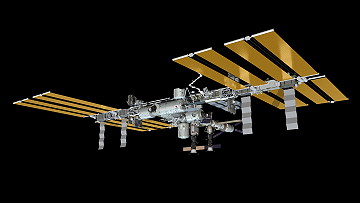 |
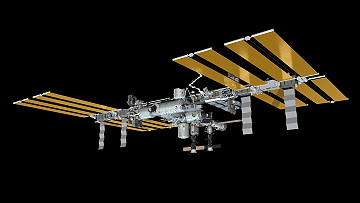 |
 |
 |
 |
 |
Photos
 |
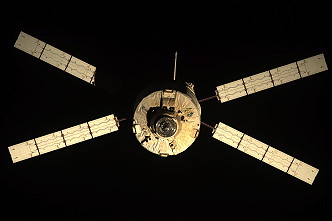 |
 |
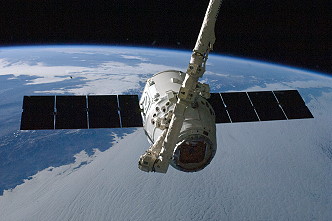 |
 |
 |
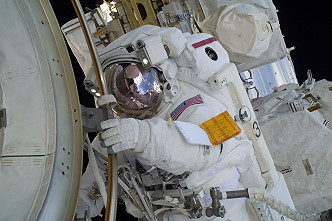 |
 |
 |
 |
more EVA photos |
|
more onboard photos |
|
| © |  |
Last update on December 14, 2020.  |
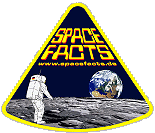 |